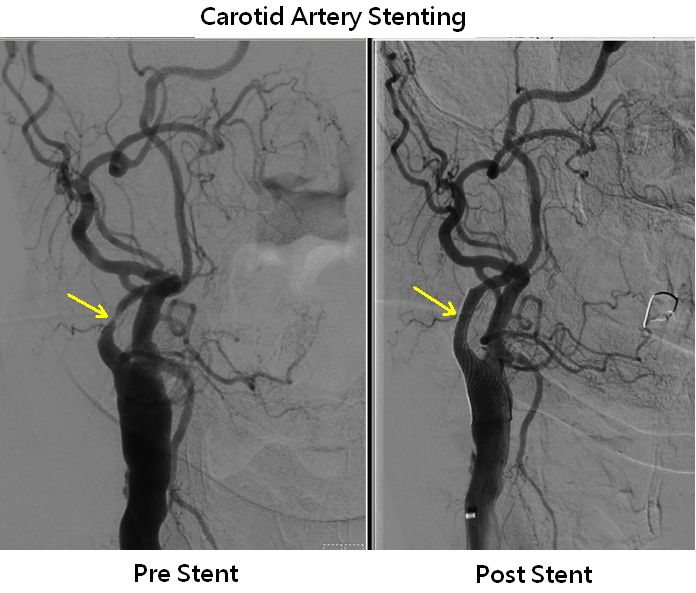Carotid and Cerebral Artery Stent
Overview
Stroke is the leading causes of death globally in the last 15 years, and the most common factor for acquired disability in adulthood. Carotid/cerebral artery stenosis, which refers to narrowing of the carotid/cerebral artery caused by atherosclerosis or other pathology, is one of the most important risk factors for ischemic stroke. The most common sites of atherosclerosis is the origin of the internal carotid artery at the carotid bifurcation, followed by the origin of the vertebral artery (proximal extracranial vertebral artery stenosis). Revascularization of carotid/cerebral artery stenosis in selective patients, including endarterectomy or stenting, has been shown to be effective at preventing stroke over long-term follow-up.
Features
Carotid/cerebral artery stenting re-opens obstructed arteries that have become narrowed or blocked by atherosclerotic plaques or other pathology (Such as: dissection, inflammation, post-radiation injury…etc.). This is one of the approved and mostly adopted therapies to treat carotid/cerebral artery stenosis. The patients remain awake during the procedure.
Indications:
- >50-60% of stenosis at internal carotid artery in patients with ipsilateral ischemic stroke, transient ischemic attack or amaurosis fugax.
- >70-80% of stenosis at internal carotid artery in patients without ipsilateral ischemic stroke, transient ischemic attack or amaurosis fugax.
- Significant stenosis of verterbobasilar artery in patients with associated ischemic stroke or symptoms of vertebrobasilar insufficiency.
- Severe stenosis of subclavian artery stenosis in patients with subclavian steal syndrome.
- Significant carotid artery stenosis after neck irradiation
- Restenosis after endarterectomy or stenting
Procedure
Endovascular treatment of carotid/cerebral artery stenosis involves insertion of a catheter usually in the femoral artery at the groin under local anesthesia, which is then advanced to the site of stenosis. Next, a special filter is delivered through the catheter and placed just beyond the narrowed part of the artery, which is designed to catch thrombus or emboli that may be released during the procedure. Thereafter, a small, deflated balloon through the catheter is placed to the blocked part and then is inflated. After the balloon is deflated, a small metal mesh stent will be implanted in the artery and is expanded to reopen the artery. Finally, the balloon, filter and catheter are removed. The stent remains in place to help prevent future narrowing of the carotid/cerebral artery.
Notification
- Hematoma over puncture site (<2%)
- Stroke or transient ischemic attack (<3%)
- Hyperperfusion syndrome (1-2%)
- Carotid/cerebral artery dissection or perforation (<1%)
- Restenosis or reoccurrence of the artery narrowing around or within the stent (The incidence varies according to the disease nature of stenosis, post-procedural medical treatment and underlying risk factors)

Estimated Cost
For estimated medical costs, please contact our International Medical Service Center.
Click the link below to contact our International Medical Service Center.
Last Modified: